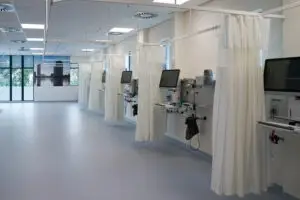Implementing an Effective Emergency Preparedness Plan in Your ASC
In the healthcare sector, especially in Ambulatory Surgery Centers (ASCs), having a robust emergency preparedness plan is not just a regulatory requirement, but a necessity for patient safety and operational resilience. This post guides you through the process of creating, activating, and refining an emergency preparedness plan, with a special focus on how HUB can facilitate this crucial task.
The Importance of Emergency Preparedness in ASCs
Emergency situations, ranging from natural disasters to pandemics, can occur without warning and disrupt healthcare services. An effective emergency preparedness plan ensures that ASCs can respond quickly and efficiently, minimizing risk to patients and staff, and maintaining critical operations.
Step-by-Step Guide to Emergency Preparedness
Step 1: Risk Assessment
- Identify Potential Emergencies: Assess the types of emergencies that could impact your ASC, considering location-specific risks like floods, earthquakes, or power outages.
- Evaluate Impact: Determine the potential impact of these emergencies on your operations, staff, and patients.
Step 2: Developing the Emergency Plan
- Create a Comprehensive Plan: Develop an emergency plan that addresses identified risks and outlines clear response strategies.
- Incorporate Essential Elements: Ensure your plan includes communication protocols, evacuation procedures, resource allocation, and patient safety measures.
Step 3: Implementing the Plan with HUB
- Utilize HUB for Coordination: Leverage HUB’s platform to coordinate emergency response efforts, store critical information, and disseminate real-time updates.
- Documenting Procedures: Use HUB to document and access your emergency procedures easily.
Step 4: Training and Drills
- Conduct Regular Training: Train your staff on emergency procedures and the use of HUB during emergencies.
- Simulate Scenarios: Organize drills to simulate emergency situations and refine response strategies.
Step 5: Review and Refinement
- Assess After Action: After drills or actual emergencies, review the effectiveness of your response.
- Refine the Plan: Use insights gained to refine and update your emergency preparedness plan.
HUB’s Role in Streamlining Emergency Preparedness
HUB offers tools and functionalities that are critical in managing emergency preparedness:
- Centralized Information Hub: Keep all emergency-related information centralized and easily accessible.
- Communication Tools: Utilize HUB’s communication features for timely dissemination of information during emergencies.
- Record-Keeping and Reporting: Maintain logs and reports of emergency responses and drills for compliance and review.
Continuing Education and Resources
Staying informed and educated about emergency preparedness is crucial. Here are some external resources to explore:
- FEMA’s Emergency Management Guide for Business and Industry: A comprehensive guide offering additional insights into emergency planning.
- Ready.gov’s Planning Resources: Detailed resources for emergency planning in various scenarios.
To see how an ASC can effectively implement an emergency preparedness plan, check out our tutorial on emergency preparedness planning with HUB. This resource provides in-depth, step-by-step guidance on creating, activating, and refining an emergency plan tailored for ASCs.
Implementing an effective emergency preparedness plan requires foresight, planning, and the right tools. By following these steps and utilizing platforms like HUB, ASCs can ensure they are well-prepared for any emergency scenario.
How HUB Healthcare Can Help
HUB Healthcare offers a comprehensive solution designed to enhance communication in healthcare, streamline care coordination, and improve overall workflow efficiency. Our platform includes features such as medical case management software, healthcare document management, and healthcare analytics to ensure that all aspects of patient care are optimized. By leveraging HUB Healthcare’s robust tools, organizations can reduce workflow bottlenecks, automate repetitive tasks, and facilitate better collaboration among healthcare providers. This not only improves work quality but also enhances patient outcomes, making HUB Healthcare an essential partner in achieving healthcare excellence.







